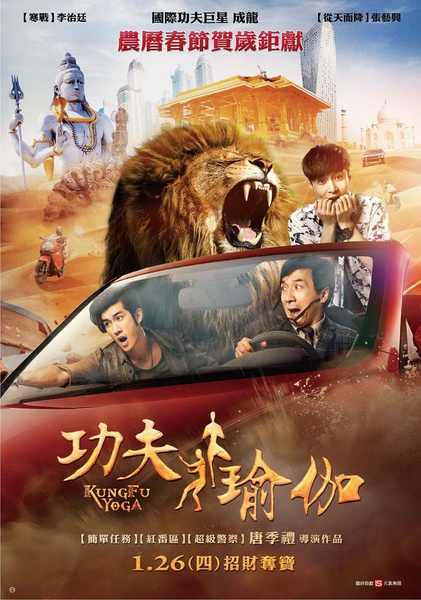

"The mid-air pose became one of Lee's trademarks." "This move was copied in many later kung fu films, and earned Lee the nickname 'Li Sanjio', or 'Three kick Lee'," wrote critic Chang Yu in 1984. Maria Yi Yi (left) and Bruce Lee in a still from The Big Boss (1971). Lee had objected to the move, as he said it was not realistic, but it looked so good on the screen he ended up adopting it. The combination of acrobatic northern kung fu styles and Lee's southern-influenced jeet kune do, which was based in wing chun, led to one of his trademark moves, the jump with three kicks. Han did not like the aggression of Lee's style of choreography, and complained about getting kicked in the face by him during a scene (Han also played the big boss in the film). This was not a happy arrangement, but the result of a working compromise between the two men. But Lee wanted a more realistic look than the stylised acrobatic martial arts that came from Chinese opera, and choreographed his own scenes. The martial arts choreography was by Han Ying-chieh, a respected martial arts choreographer - he had choreographed King Hu's classics Come Drink With Me and Dragon Inn, and acted in both, among many others. © Provided by South China Morning Postīruce Lee in a still from The Big Boss (1971). "Thus he maintained some of what the audiences expected to see from wuxia pictures, but presented something they had never seen before - an animalistic fight sequence of two men using real kicks and punches," Teo says. His strategy was to heighten the reality of the kung fu techniques in an offsetting effect combining the conventions of wuxia pictures. "Lee employed his famous leaps-in-the-air stunts achieved by trampoline. "He adapted the expansive exaggerated style choreography of the new school wuxia cycle which preceded the rise of the kung fu movie, realising that audiences would be used to watching this kind of violence," writes Teo. In an erudite observation, Stephen Teo, in his book Chinese Martial Arts Cinema - The Wuxia Tradition, notes that The Big Boss drew heavily on wuxia films and that Lee knew it. "It brought Lee's kung fu style to the attention of South East Asian countries, and in retrospect is still the best and the purest of all the Bruce Lee films, as it was unhampered by big-box-office superstar temperament and complex distribution deals," wrote Tobias.Īlthough Jimmy Wang Yu's 1970 film The Chinese Boxer had started the trend away from sword-fighting-oriented wuxia films and towards kung fu, the success of The Big Boss made films featuring unarmed combat an unstoppable trend in the city. "It is the first public appearance of the flamboyant Chinese weapon in the person of Bruce Lee." "The surprise Hong Kong movie of 1971!" opined local critic Mel Tobias in the long out-of-print Post book Memoirs of an Asian Filmgoer, a collection of writings from the 1970s. It was well received by critics and audiences alike when it opened. The Big Boss (in Chinese, The Big Brother from Tangshan) was shot in a small village in Thailand and featured Lee as a worker in an ice-making factory who ultimately takes on his corrupt and murderous boss. Moore even deigned to interview Lee about the film for the Post, noting that the star gave " the most athletic handshake this side of the international date line". It made a million of those in just two days, and displaced the musical The Sound of Music as the city's highest grossing film.Įven the Post, which was not known for covering local films back then, was impressed - journalist Jack Moore wrote that Lee was "the newest superstar in the Mandarin film world" and called him "a heck of a good actor".
#KUNG FU YOGA MOVIE MALAYSIA FULL#
Opening on the last day of October, 1971, it drew full houses for its seven daily screenings and took HK$3.2 million at the box office during its 19-day run.


 0 kommentar(er)
0 kommentar(er)
